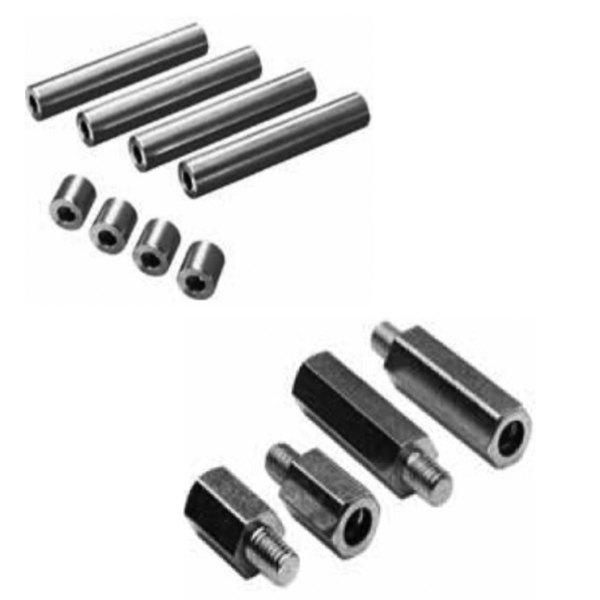Enclosure Stand-Off Kits

Enclosure stand-off kits are designed to provide a practical solution for mounting enclosures, particularly in settings where space between the enclosure and the mounting surface is required. These kits typically include stand-offs, which are small yet sturdy supports that create a gap between the enclosure and the surface it's mounted on. This space can be crucial for various reasons, such as ensuring adequate ventilation, facilitating wiring, or allowing for easier access to the back of the enclosure.
The stand-offs in these kits are often made of durable materials like 304 stainless steel, known for its strength and corrosion resistance. This makes them suitable for use in a variety of environments, including those prone to moisture or other corrosive elements. Stainless steel stand-offs are particularly beneficial in ensuring the longevity and reliability of both the kit and the enclosure.
More Information about Enclosure Stand-Off Kits
The kits are designed for easy use and typically include all necessary components for the assembly and installation process. This may include a set number of stand-offs – often 2 or 4, depending on the size and weight of the enclosure – as well as other mounting hardware like screws or bolts. The inclusion of these components in a single kit simplifies the installation process and ensures that users have everything they need for a secure setup.
Stand-off kits are versatile and can be used with various types of enclosures, from small cabinets to larger boxes. They are particularly useful in situations where maintaining a certain distance from the floor or another surface is required, either for compliance with safety regulations or for practical reasons like cooling and wiring management.
Enclosure stand-off kits are an essential accessory for installing enclosures, especially when space between the enclosure and its mounting surface is needed. Made with high-quality materials like 304 stainless steel, these kits provide a durable, reliable, and easy-to-use solution for a wide range of enclosure mounting needs.
Stainless Steel Enclosures: Type 304 vs 316
304 Stainless Steel
304 stainless steel contains 18% chromium and 8% nickel. It is the most widely used stainless steel within industrial applications. 304 stainless steel resists corrosion and oxidizing agents, which can cause rusting. However, it can tarnish. 304 stainless steel is very strong and can be bent without decreasing the strength, but it can be difficult to manipulate. Because of its corrosive resistance, 304 stainless steel enclosures are commonly used in dairy plants, mills, bakeries, and many other food processing industries.
316 Stainless Steel
316 stainless steel is a much higher grade of stainless steel containing 16% chromium, 10% nickel and 2% molybdenum, which significantly increases its resistance to pitting and cracking. It has increased corrosive resistance to chloride pollutants, such as salt. 316 stainless steel enclosures are ideal for areas there may have a high salt content, such as coastal areas and areas that use de-icing salts. This type of stainless steel is much more resistant to chemical environments that include sulphuric acid, phosphoric acid or many other chemicals. These types of stainless steel enclosures can be found in areas with high levels of corrosive agents, such as water, wastewater, chemical plants and fertilizer plants. Both 304 and 316 stainless steel enclosures are NEMA 4X rated due to their corrosion resistance, however it is important to remember to never use any chemicals that contain chlorine.

